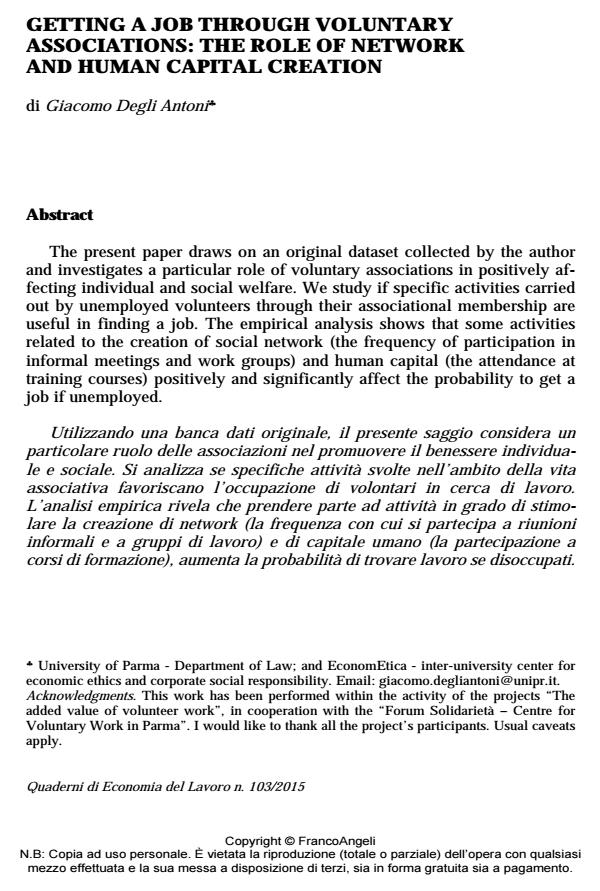Getting a job through voluntary associations: the role of network and human capital creation
Titolo Rivista QUADERNI DI ECONOMIA DEL LAVORO
Autori/Curatori Giacomo Degli Antoni
Anno di pubblicazione 2015 Fascicolo 2015/103
Lingua Italiano Numero pagine 18 P. 49-66 Dimensione file 111 KB
DOI 10.3280/QUA2015-103004
Il DOI è il codice a barre della proprietà intellettuale: per saperne di più
clicca qui
Qui sotto puoi vedere in anteprima la prima pagina di questo articolo.
Se questo articolo ti interessa, lo puoi acquistare (e scaricare in formato pdf) seguendo le facili indicazioni per acquistare il download credit. Acquista Download Credits per scaricare questo Articolo in formato PDF

FrancoAngeli è membro della Publishers International Linking Association, Inc (PILA)associazione indipendente e non profit per facilitare (attraverso i servizi tecnologici implementati da CrossRef.org) l’accesso degli studiosi ai contenuti digitali nelle pubblicazioni professionali e scientifiche
The present paper draws on an original dataset collected by the author and investigates a particular role of voluntary associations in positively affecting individual and social welfare. We study if specific activities carried out by unemployed volunteers through their associational membership are useful in finding a job. The empirical analysis shows that some activities related to the creation of social network (the frequency of participation in informal meetings and work groups) and human capital (the attendance at training courses) positively and significantly affect the probability to get a job if unemployed.
Giacomo Degli Antoni, Getting a job through voluntary associations: the role of network and human capital creation in "QUADERNI DI ECONOMIA DEL LAVORO" 103/2015, pp 49-66, DOI: 10.3280/QUA2015-103004